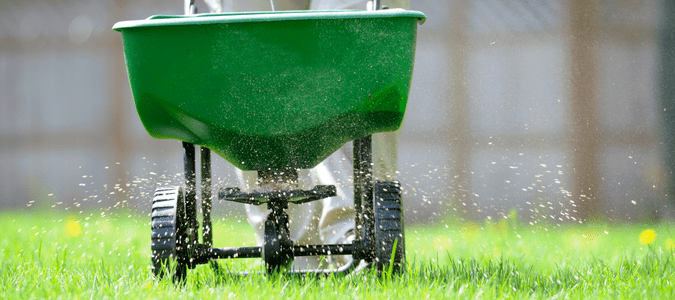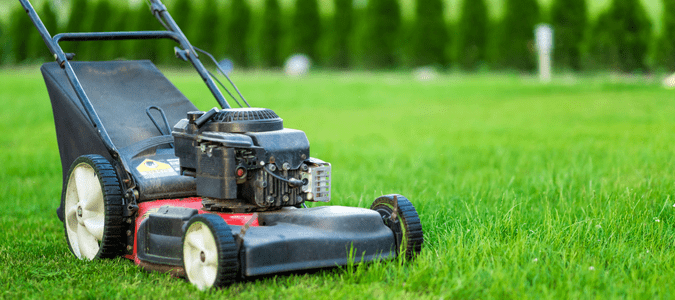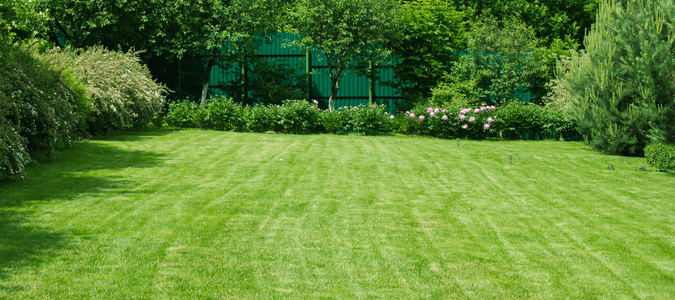When you get a little rain it seems like the perfect time to get your lawn growing. But, there are a few things you need to consider before going all out on your landscaping, especially when deciding if it’s better to fertilize before or after mowing.
Before you fertilize your lawn, understand that you will need to wait 24 hours until you water. That gives the fertilizer time to settle into the lawn before you give it a solid soaking. If you aren’t getting much rain and still want to fertilize your lawn, give it a good soaking one or two days before you plan to fertilize. Then, lightly water again after the fertilizer settles. It’s possible to do all this yourself, but hiring a professional can be much easier. An expert knows exactly how much fertilizer to add to your lawn and how much to water after application.
If you choose to fertilize yourself, there are a few things you should know.
Choose The Proper Tools and Nutrients
Your lawn is a plant and all plants require nutrients. Your lawn needs nitrogen, potassium and phosphorus. Keep in mind, the more nitrogen you add, the more you will need to mow. That isn’t necessarily a bad thing. However, there is a such thing as too much nitrogen. So, how do you add the required nutrients to your lawn? There are a couple of types of spreaders that you can buy.
- Broadcast Or Rotary Spreader: If you have a large lawn, broadcast and rotary spreaders are good choices. Fill up the spreader on a tarp or other wide surface so you can gather any fertilizer that might spill. Once the hopper is filled, apply the fertilizer around your lawn’s perimeter and then move the hopper back and forth across the turf. Be sure to apply the strips in an overlapping pattern to slightly cover your tracks and ensure that you are covering your entire lawn evenly with the fertilizer.
- Drop Spreader: If you choose to use a drop spreader, overlap each pass slightly to be sure that you are covering your lawn adequately. Do not forget to close the hopper at the end of each pass. A drop spreader costs more, but if you have a regular-sized lawn, it will be worth that initial investment. If you do it yourself and you accidentally spill some of the fertilizer onto your lawn, use a stiff broom to spread out any extra fertilizer. Or, bypass that risk and bring in a lawn service professional.
- Handheld Broadcast Spreader: If your lawn is fairly small, this might be the best DIY route for you. Be sure to walk slowly and evenly and overlap your distribution patterns just slightly. If your lawn sees significant shade, make sure that you use a fertilizer that also contains an herbicide. Hiring a lawn care professional will ensure that you are taking the best care of your yard.
- Hand-Held Spreader With Batteries: Here is where things get even easier if you have a small yard! This type of spreader is already calibrated. You just flip a switch and start walking. This spreader is also useful in areas where it is tricky to use a push spreader, such as a sloping yard.
Aerate Before You Fertilize
Aerating your soil a day or so before fertilizing is a useful step. During aeration, plugs of grass and soil are removed from the lawn. This allows the soil to better absorb oxygen, water and nutrients. Once your lawn has been aerated, give it a light second watering.
If your weather forecaster is accurate and the outlook calls for rain, you could time your waterings based on that. However, you don’t want to mistime the application or you will end up washing the fertilizer away, which isn’t good for your lawn or your bank account.
Free Fertilizer?!
Don’t love bagging up grass clippings after you mow your lawn? No need to feel at all guilty! You are actually doing your grass a favor by leaving it alone. The clippings provide nutrients that will help your lawn look its best.
In fact, grass clippings can provide about 25 percent of the fertilizer that your lawn needs. And, you don’t even need a mulching mower to get the benefits. The only special equipment you might consider is a smaller blade for your mower. This will cut the grass into smaller pieces, and that means that it will decompose faster.
Just make sure that you never cut more than a third of your grass blade at a time, especially if you’re leaving your clippings on the lawn. If you do, you could damage the grass blades by cutting them too short and you could hinder their growth with too much coverage from the grass clippings.
Using Compost
More and more people are composting in order to make their lawn more environmentally friendly. The nitrogen from compost feeds grass’ roots slowly, which is healthier for the lawn because it helps avoid too much nitrogen leaching from occurring.
A bonus to using compost is that it doesn’t just help your grass. The microorganisms, organic matter and micronutrients also help you build a better foundation for that grass: the soil.
The best time to apply compost to your lawn is in early spring. Spread it on in a thin layer. You will also want to do it after aerating the soil. Adding compost after each aeration to boost your soil’s health and in turn, do the same for the lawn’s roots. If your grass has gotten a little thin, you can go ahead and shovel the compost on in a few spots to encourage regrowth. Then, use the back of a broom or rake to get the compost worked into the soil. Give it a good watering afterward.
Fertilize or Overseed First?
Overseeding means planting new grass right on top of your existing grass. Why do this? Because it makes it harder for weeds to take root, fills in bald spots and makes the grass that is already there healthier. The timing of overseeding depends on the type of grass in your lawn.
Cool season grasses are fescue, perennial ryegrass and Kentucky bluegrass. For these types, you will want to overseed in the fall. Bermuda, centipede, Saint Augustine and zoysia are warm season grasses. Late spring or early summer is ideal for overseeding warm season grasses, especially in the South. Make sure to water grass seedlings frequently and lightly in spring or early summer. This will help them get established before hot, dry weather sets in.
However it is important to remember not to fertilize for about a month prior to overseeding! The reason for this is that the fertilizer’s job is to boost grass’ growth. This is counterintuitive to the reason behind overseeding is to help the lawn become healthier, but when the existing lawn grows faster it is harder for the new seeds to take root at all.
How Often Can You Fertilize Your Lawn?
You can fertilize your lawn up to four times a year. Typically, it’s recommended to fertilize once in the early spring, once in the late spring, once in the summer and once in the fall. This will help give your lawn a pick-me-up throughout the seasons. However, it’s not always necessary for you to fertilize your lawn four times a year. The best way to see whether your lawn will need to be fertilized is to take a soil test. A soil test will show you which nutrients your lawn is lacking.
There are many factors that can affect nutrient levels and how often you will need to fertilize. The level of shade your grass gets as well as rainfall and the type of soil will all affect what type of fertilizer is best for your needs.
Also, when fertilizing, be careful not to use too much fertilizer. Excess fertilizer can actually weaken your lawn and lead to yellow spots or fungus growth. Hiring a pro is the best way to make sure that you are getting the best treatment for your specific type of lawn. Plus, it’s less work for you to tackle!
ABC Can Help Keep Your Lawn Green
The best way to keep your lawn healthy is to create a lawn care schedule that works best for the grass type, soil type and amount of sun exposure you have in your yard. Instead of spending your free time trying to determine what schedule will work best for your particular situation, contact ABC Home & Commercial Services. Our lawn care specialists are highly-trained and can provide you with routine lawn care that keeps your lawn green all season long.



